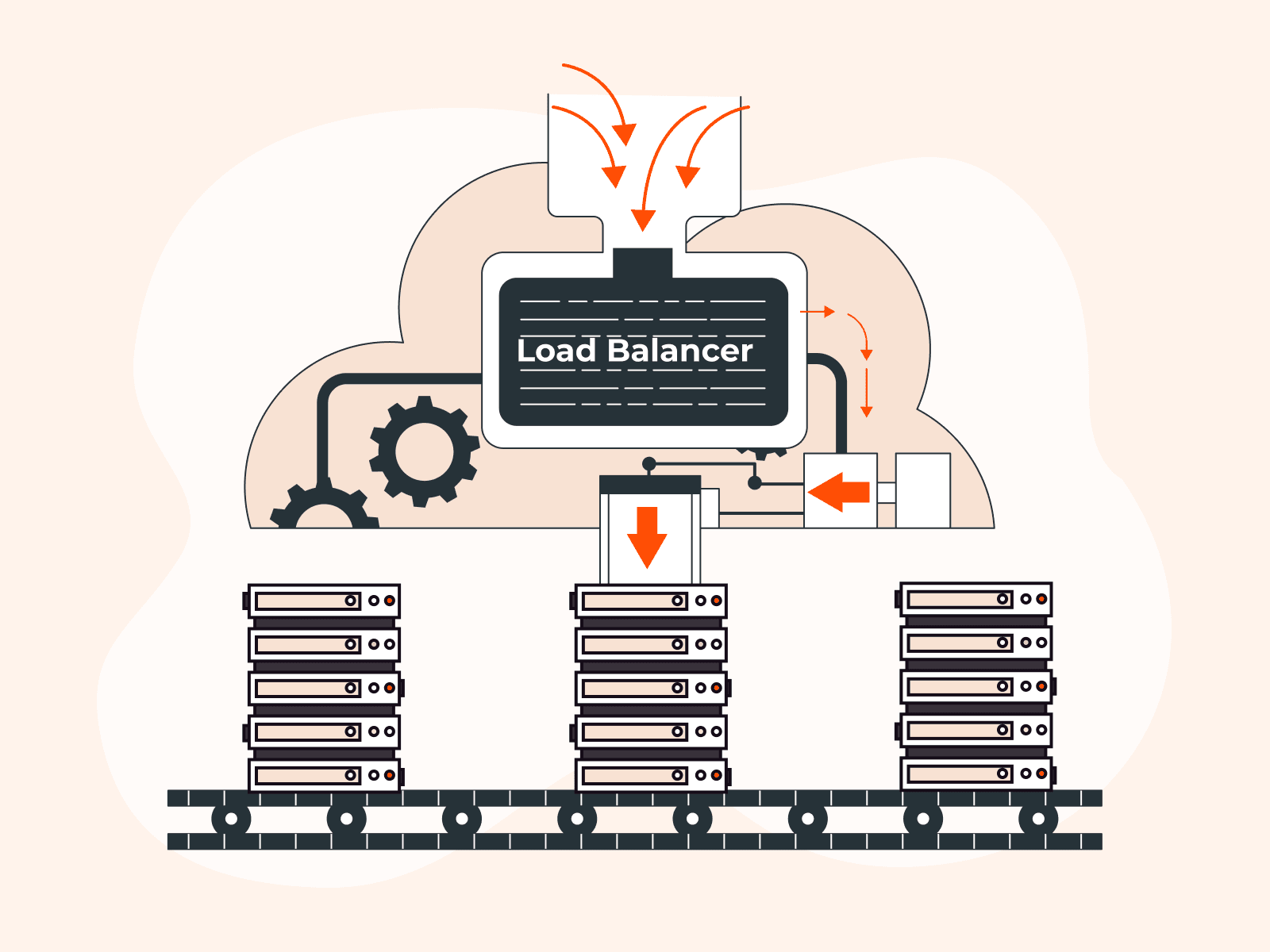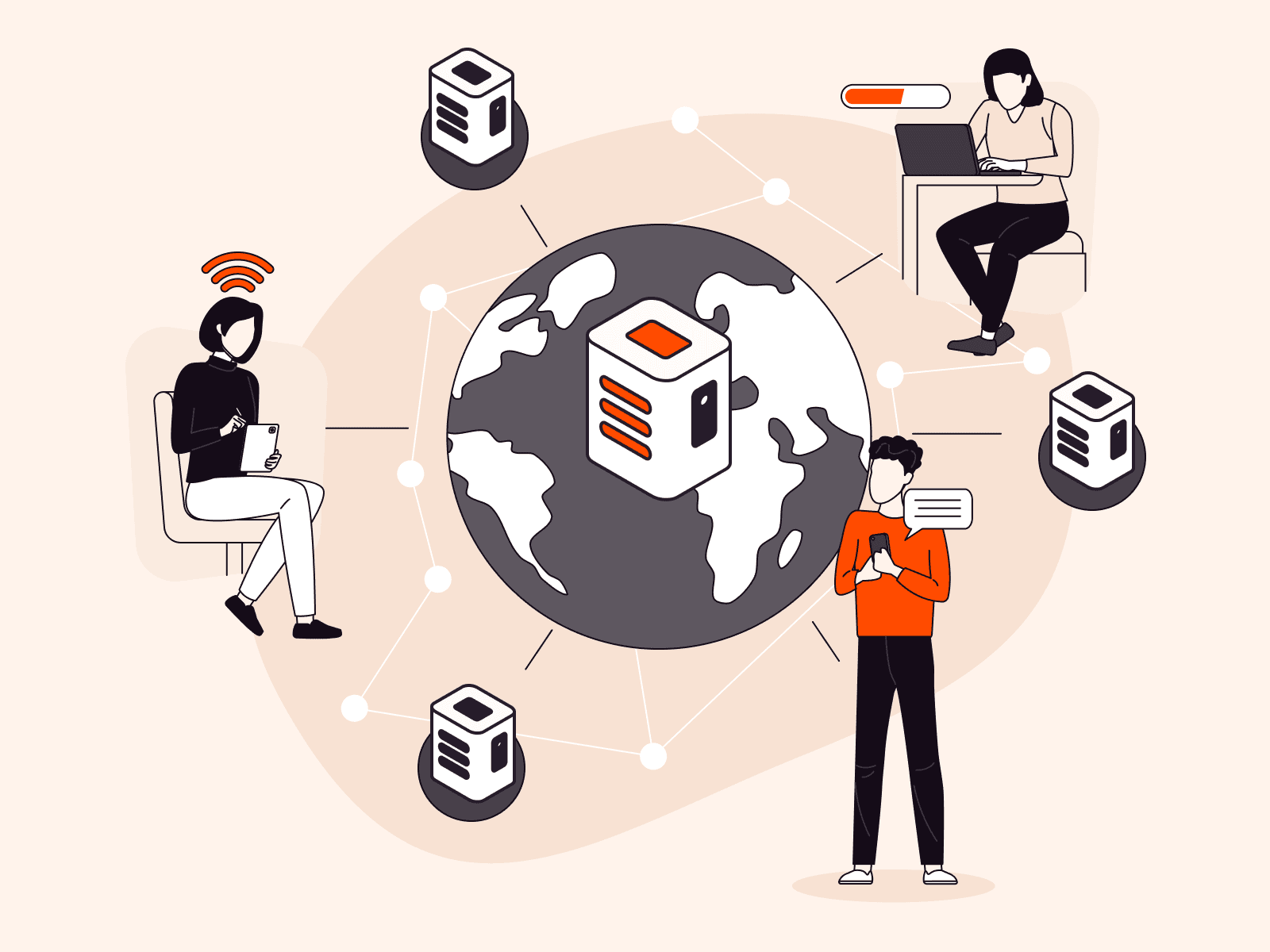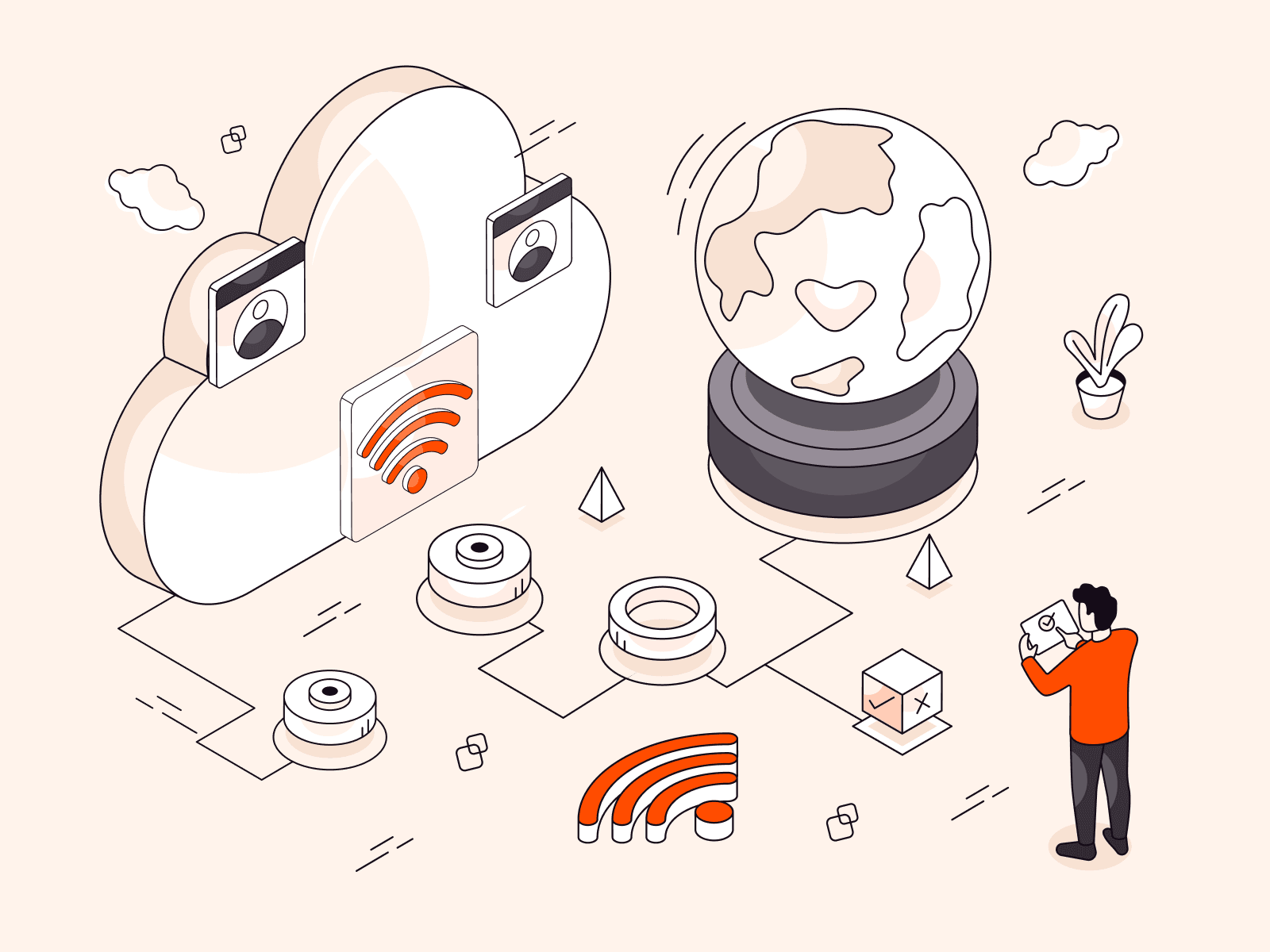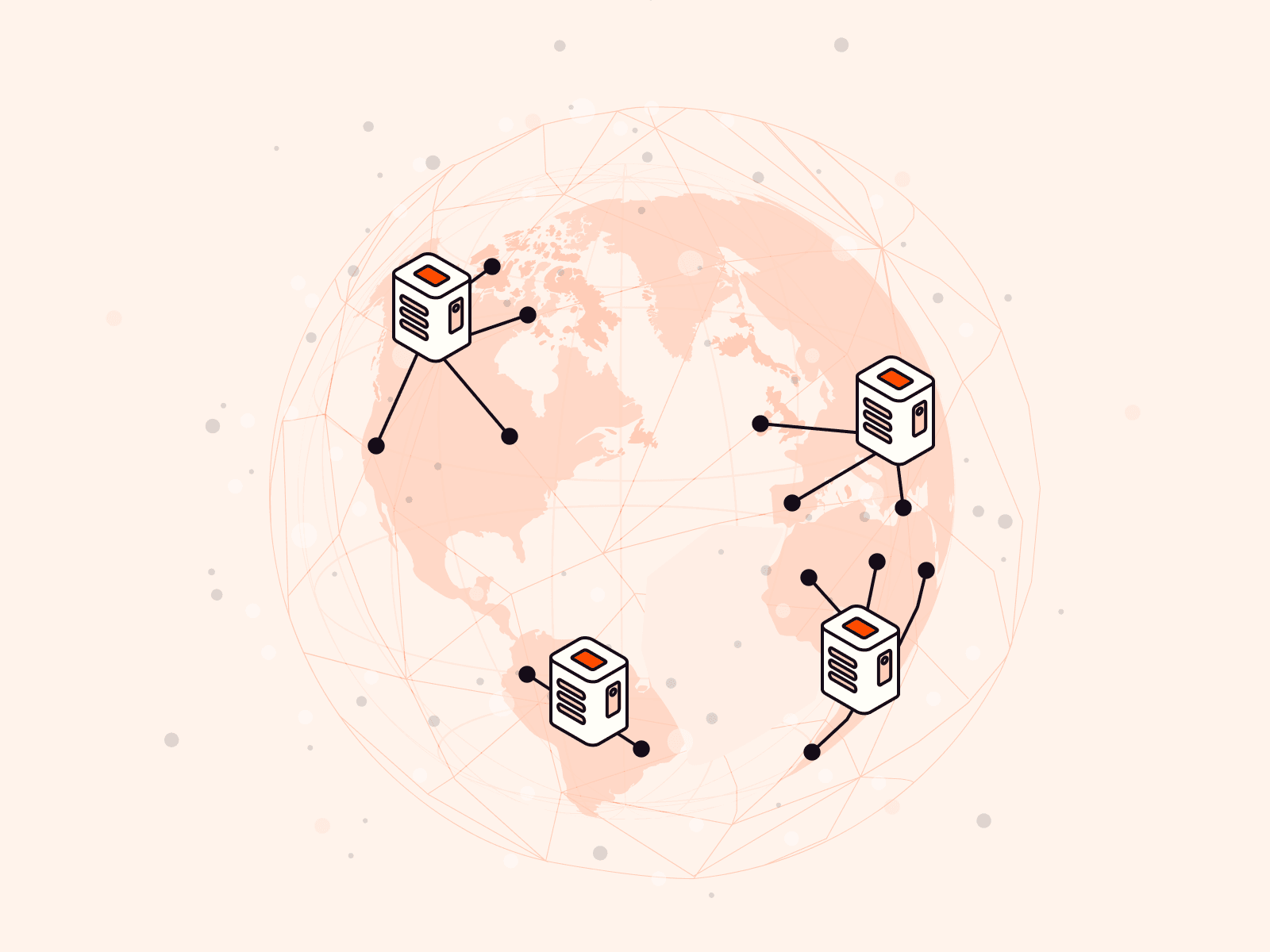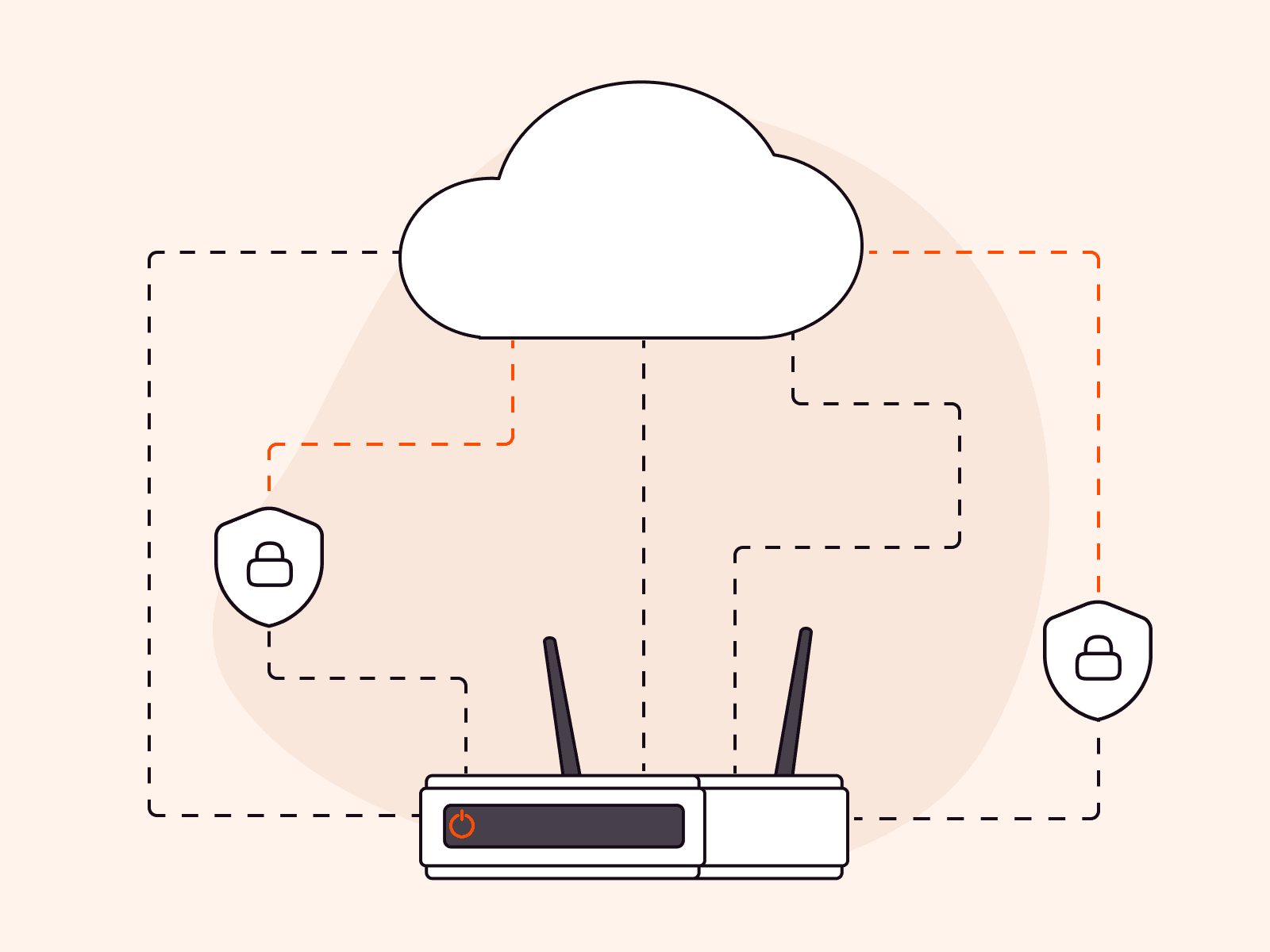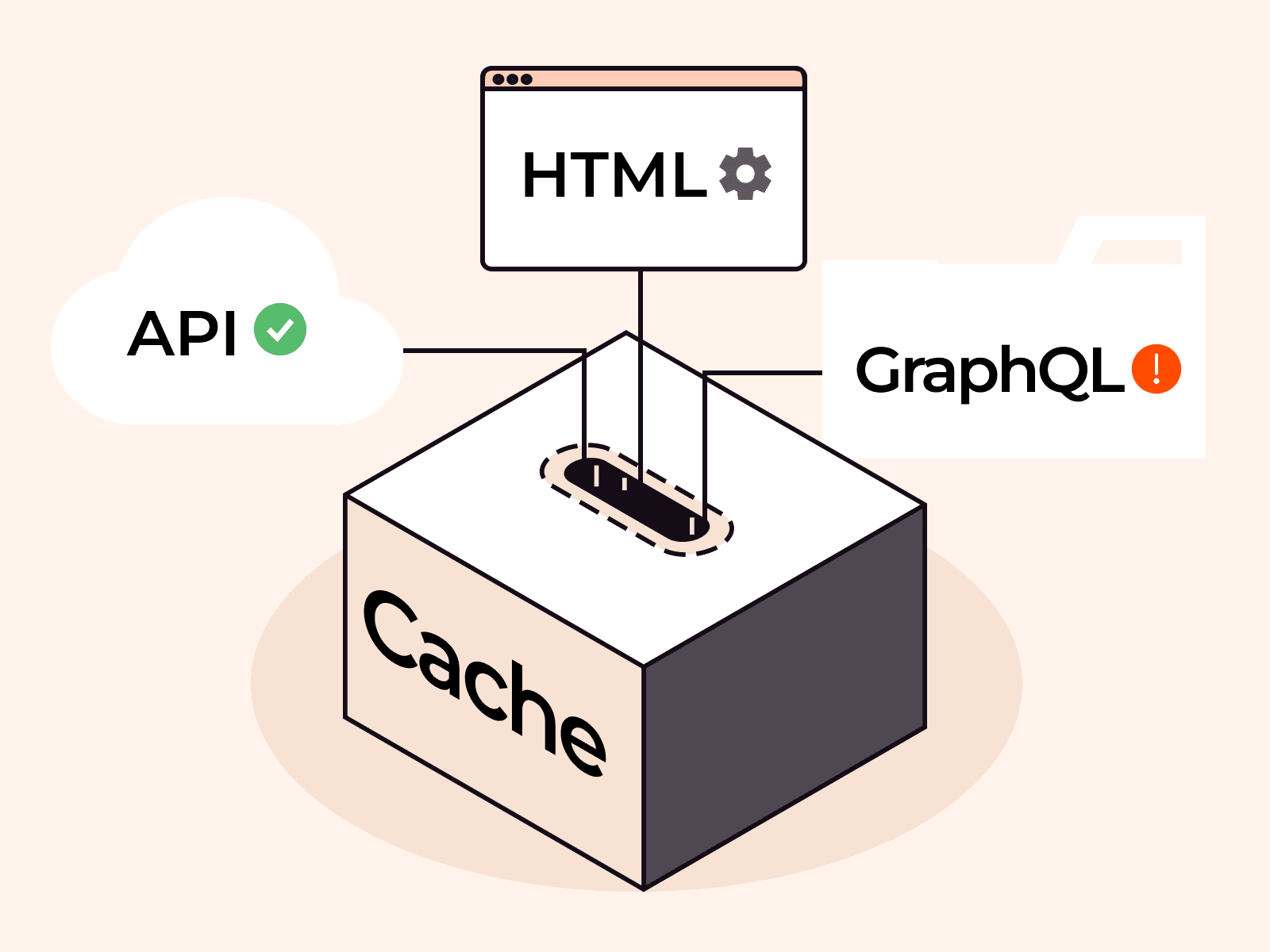Peering is a mutual agreement to exchange traffic between two networks. Commonly, this happens without the networks paying one another for their services. Peering enables businesses mutually to reduce the cost of traffic and increase network performance and reliability. In this article, you’ll learn about two types of peering—public and private—and the advantages and disadvantages of each.
What Is Internet Peering?
The internet is not a single, monolithic network but a complex web of interconnected networks (frequently called autonomous systems) that are owned and operated by different entities. For example, internet service providers, enterprises, and educational institutions own and manage their own networks.
If traffic moves from one member of a network to another, these entities are fully responsible for carrying that traffic. But who carries the traffic that crosses network boundaries? For example, if a person at one company wants to send data to another company, how does that happen?
In order that the devices in different networks can talk to each other, networks make agreements about carrying one another’s traffic.
These agreements can be divided into two categories:
- Transit, where a smaller network pays a larger network to carry its traffic
- Peering, where two networks of equal size directly exchange traffic without payment
This article focuses on peering agreements and how they work.
How Does Network Peering Work?
Sending data to other networks on the internet usually involves paying transit costs—the cost of carrying your traffic—to an internet service provider (ISP.) The ISPs might pay further transit costs to other ISPs. Instead of paying these transit costs, peering agreements can be made with the networks to which data is sent. These are mutual agreements to carry traffic for each other without paying anything.
The diagram below shows two entities that have a peering arrangement. These entities could be any organizations that would benefit from establishing a direct network connection to route and forward traffic between them efficiently. For instance, peering agreements between universities are common.
As an example, in the diagram below, Network 1 and Network 2 have established a direct connection between themselves to exchange network traffic. Additionally, these networks rely on ISPs and transit agreements for the traffic they do not exchange. Without a peering agreement, they would need to rely on those ISPs for the traffic that they exchange between themselves as well.

Benefits of Peering
Connecting networks to exchange traffic directly offers many potential benefits to network operators:
- Reduced costs: Since you don’t have to pay transit costs for sending data to this network, you’re likely to save money. However, this isn’t guaranteed to be the case, since the agreement is mutual meaning that you also need to carry traffic for the other network. That’s why companies typically make peering agreements with networks that are similarly sized and not networks that are significantly smaller—otherwise, there is no benefit to carrying their traffic, and it could even have a negative financial impact.
- Increased reliability: Having additional connections to different networks via peering instead of relying on a single transit provider means that you have more resilience in case your transit provider fails.
- Better performance: Since traffic between peers doesn’t need to pass through an ISP and can be exchanged directly, peering increases speed and decreases latency.
What Is Public Peering?
Peering can be divided into two types: public peering and private peering. Public peering involves creating connections between the networks using public infrastructure, while private peering uses private connections.
Public peering is commonly performed at an internet exchange (IX), which is a physical location that acts as a neutral meeting point for various networks. IXs use network switches that allow networks to connect and exchange traffic with one another. In return, the network owners pay service fees to the IX.

Once you’re connected to an IX, you can peer with the other networks residing there. Some networks will have an open peering policy, meaning that they accept peering with almost anyone, while others will have a set of requirements you need to fulfill through a selective peering policy. With a bit of communication with other network owners, it’s easy to establish new peering connections.
The possibility of making new peering agreements quickly and cheaply makes public peering great for large networks looking to exchange traffic with a large number of peers in a cost-effective and easy way.
Pros of Public Peering
Public peering is easier and cheaper to start than private peering, so it’s the best choice for networks looking to kickstart their peer network. In particular, it has the following advantages:
- Large number of potential peers: Public peering gives access to many possible peers via IXs. When you connect to an IX, there are usually plenty of candidates with whom you can peer.
- Greater cost effectiveness: It’s relatively easy to find peers and initiate peering agreements once your network is located at a certain IX. This means public peering is more cost effective than private peering.
- Ease of setup: Since IXs provide most of the necessary infrastructure for peering, public peering is much easier to accomplish than private peering. In private peering, there is no intermediary to facilitate the connection.
Cons of Public Peering
Relegating a part of your network infrastructure to a public provider comes with some security and performance risks. Consider these drawbacks:
- It’s public: Even though you’re creating mutual, one-to-one relationships, you’re still doing it using public infrastructure. This adds some latency and has the potential for security risks since the traffic is traveling through a public network.
- Less control: With public peering, you have less control over who you’re peering with and their routing policies than when using private peering. This can lead to potential issues with routing efficiency and stability.
- Network and infrastructure issues: Since you’re using public infrastructure for peering, you may encounter problems such as network congestion or outages. These could reduce performance.
What Is Private Peering?
Private peering involves two networks connecting to each other directly without using an intermediary such as an IX. This can happen either through a direct connection via cable or a virtual connection via cloud.

Since setting up a connection without an intermediary is much more time and cost intensive, this option usually only makes sense when it’s easy to set up (like when the networks are already colocated in a data center) or when large amounts of data need to be transferred. This means that private peering happens in a much more ad-hoc manner than public peering. Usually, one party reaches out to possible peers and discusses the opportunities that a private peering partnership can bring.
Pros of Private Peering
As with public peering, private peering reduces costs, increases reliability, and decreases latency. But the fact that the two networks are in direct control of how traffic moves between them brings extra benefits:
- Increased security: Private peering provides a higher level of security than public peering because it does not use any public or third-party infrastructure.
- Flexibility: Private peering gives networks control over their traffic and routing. They can configure their connections to meet their specific needs, such as prioritizing certain types of traffic or avoiding congested routes.
- Better performance: Because private peering connections are established between two networks, there is no need to traverse through third-party networks or intermediate routing points, resulting in faster and more reliable performance.
- Long-term cost savings: While private peering may involve higher initial setup costs compared to public peering, it can result in significant cost savings in the long run. This is because private peering eliminates the need to pay third-party transit providers to carry traffic.
Cons of Private Peering
Unfortunately, setting up private peering is significantly more challenging, as is shown by its associated disadvantages:
- Larger upfront costs: Private peering usually requires a greater infrastructure investment and more coordination between the companies, which correlates with higher fixed costs. Therefore, it’s important to pursue private peering only when the investment will be worth the reward.
- Greater risk of human error: Private peering carries a higher risk of human error since it’s typically set up by individuals who may not specialize in peering as their primary job function. In contrast, an IX is supported by specialized professionals.
- Limited peer count: Finding a private peering partner is more complicated, and you’re likely to have much fewer options. Therefore, it shouldn’t be your main peering strategy but rather an option to consider when the circumstances are right—such as when you are colocated with your possible partner or have the potential to carry a lot of traffic for each other.
Public vs. Private Peering
With any peering decision, it’s important to weigh the pros and cons and determine what will work best for your network’s specific needs.
Here’s how both types of peering compare on the relevant factors:
- Cost: Public peering is generally less expensive than private peering, as it does not require the infrastructure and negotiation required for private connections. However, private peering may become more cost-effective for networks when high traffic volumes are exchanged. For example, it could be useful when the two companies use each others’ data.
- Performance: Private peering typically offers higher performance and lower latency than public peering, as it involves dedicated, high-speed connections between specific networks rather than exchanging traffic over potentially congested public internet connections.
- Flexibility: Private peering allows for greater flexibility and customization of traffic exchange agreements, as it involves direct negotiation between networks. Public peering, on the other hand, is more standardized, and the exact setup will depend on the policies of the companies you peer with and the IX itself.
- Accessibility: Public peering is more accessible than private peering since many networks have an open peering policy or simple peering requirements, making it easy to connect with them. All you need to do is contact the networks in the IX where your network is and agree with their administrators. Private peering, on the other hand, requires complicated negotiation and agreement between the involved networks. It may require additional infrastructure to establish dedicated connections.
- Control: Private peering provides greater control over traffic routing and security since it involves direct connections between specific networks. Public peering, on the other hand, involves exchanging traffic over the public internet.
Peering with a Cloud Provider
A large cloud provider can be a great option if you’re searching for a peer partner. A cloud provider peers with ISPs and other networks to improve the performance and reliability of its service. Cloud providers typically have a presence in multiple IXs.
However, before signing up with a cloud provider, you should look at its peering opportunities and processes. A cloud provider with a strong peering network offers improved connectivity and traffic cost savings by directly connecting to other networks rather than going through expensive transit providers. Additionally, partnering with a cloud provider that automates its peering process can save you the time and effort of communicating with network administrators.
Conclusion
Peering is an effective way for two networks to save traffic costs by exchanging traffic between themselves. Peering can bring several benefits to networks, including reduced latency, smaller costs, and improved performance. However, it can also be complex because it involves reaching an agreement between the participating networks before exchanging traffic. This negotiation process can sometimes take a while to complete.
In general, public peering is better for networks looking to decrease their costs by building a large network of peers, while private peering is better for two networks that are already colocated or that want to transfer a large amount of data between themselves.
Looking for somebody to peer with? Gcore uses automated peering to improve network connectivity for our clients, which means you can easily start peering with them.
Currently, we have more than 11,000 peering partners, and it’s easy to become one of them.
Related articles
Subscribe to our newsletter
Get the latest industry trends, exclusive insights, and Gcore updates delivered straight to your inbox.

